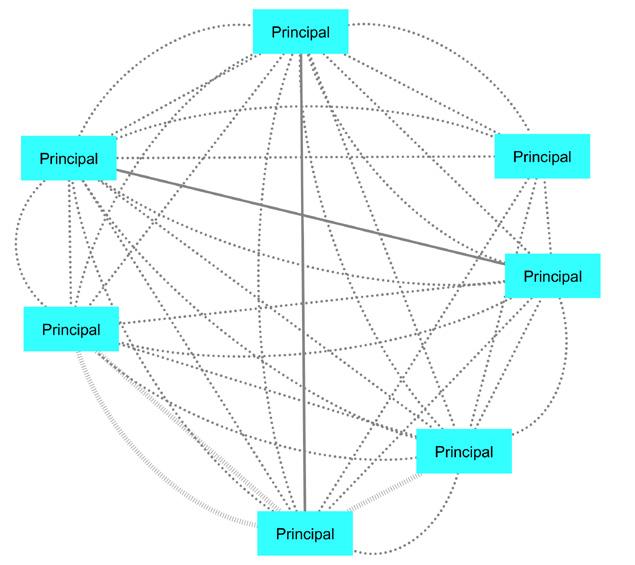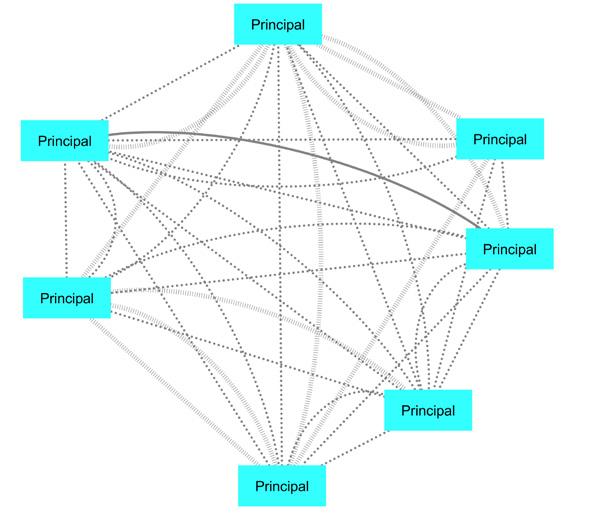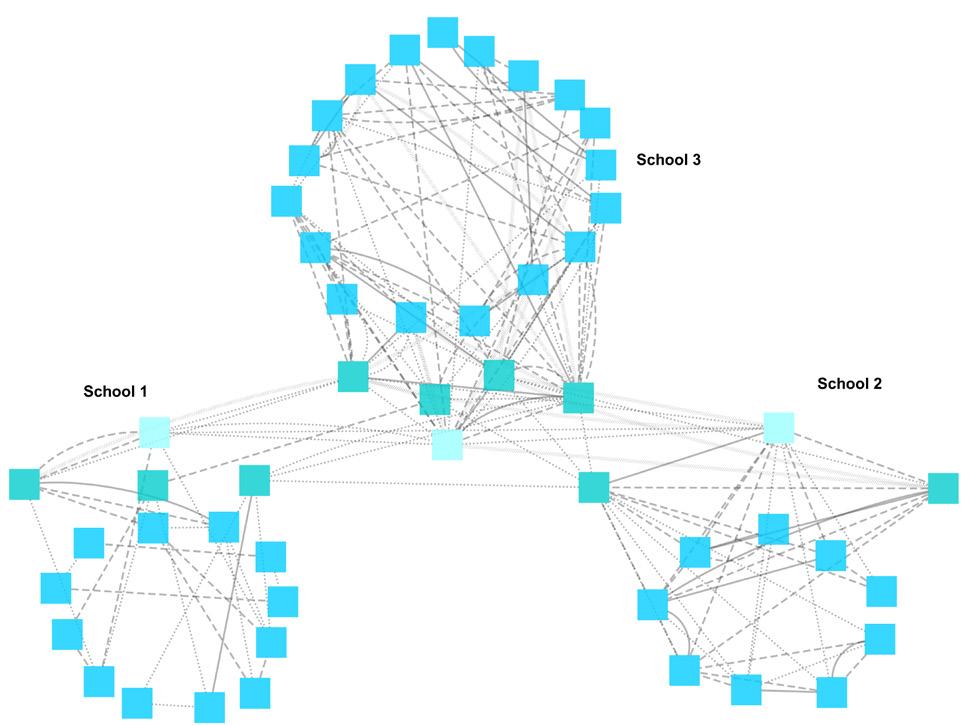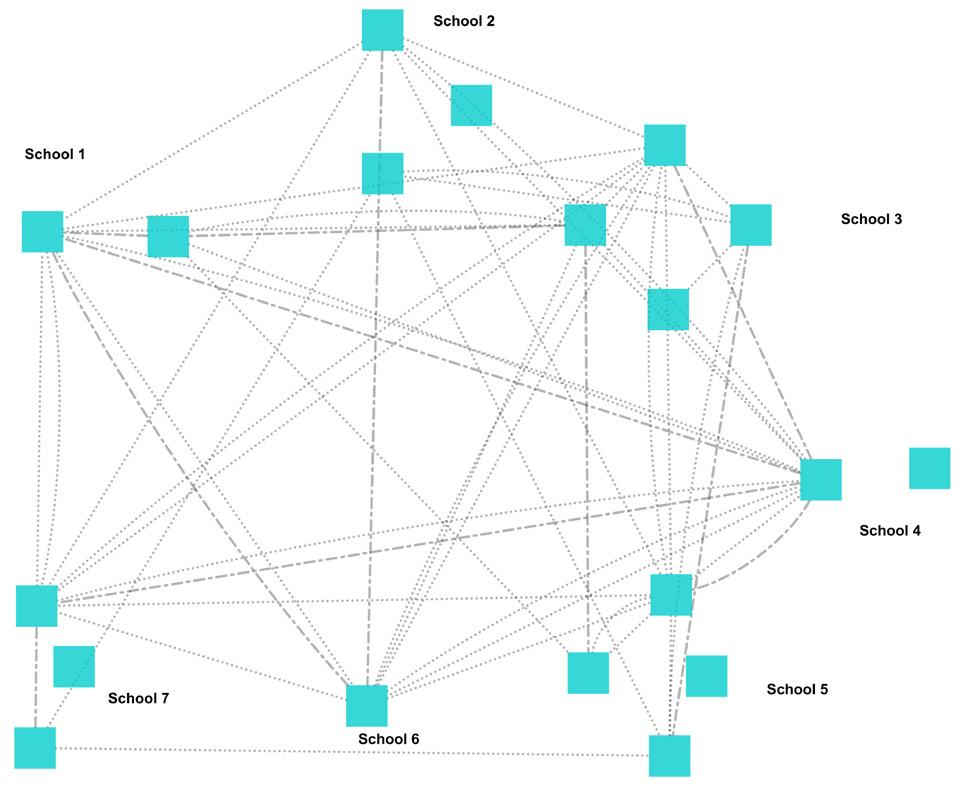
8 minute read
Appendix 3: Social Network Analysis Survey information and consent
Background and consent
Please ensure that you read the below information before beginning this survey:
Advertisement
Introduction and background
ERO is undertaking an evaluation of the Community of Practice and its contribution to responsive and collaborative learning for its students and teachers. As part of this evaluation, ERO is undertaking this survey with staff who belong to one of the seven schools that belong to the Community of Practice. This survey should take no more than 10-15 minutes of your time.
What is the purpose of this survey?
This survey will be used to inform a social network analysis (SNA) of the Community of Practice. SNA is used to understand a community by mapping the relationships that connect people and help draw out how information and resource flow across a community. The results from the SNA survey will be used to inform ERO’s final evaluation on the Community of Practice.
What will this survey ask me?
This survey will ask you about the people you commonly work with in your school, and from outside of your school. To ensure ERO can effectively map the communication network that you have in your CoP, we will ask you for the names of people you work with professionally, and for what purposes. The value of SNA will come about when the responses from across the CoP are combined. The more people that respond to this survey, the more accurate the analysis will be.
How will ERO treat my information?
ERO recognises the need to treat the information you provide us with the utmost confidentiality. As soon as ERO receives the responses, we will re-code each name into alphanumeric codes before we begin analysis. for example, John Dory would be recoded to Xf1. Any analysis that is reported publicly will not identify any information that is traceable to you, such as your name, the name of your contacts, or the names of schools in the CoP. Please note that as a public sector agency, ERO is subject to the Official Information Act 1982. If you have any questions before beginning, you can close this survey and come back to it later.
Consent
I have read the information and understand how my information will be used upon my completion of this survey. I understand that I am not required to answer any questions and can choose to stop taking part in the survey at any point. upon my completion of this survey, I understand that ERO will: • not report on any details I have personally provided to this survey. • replace any names I enter with alpha-numeric codes • use my responses to only inform the social network analysis for the CoP.
1. upon reading the above information, do you give your consent to participate in this study? (Options: ‘Yes’ or ‘No’)
About yourself
The following questions will ask for information about yourself. 2. What is your first name? (Textbox) 3. What is your last name? (Textbox) 4. What is the name of the school you belong to? (chosen from the dropdown menu) 5. What is your job title/role in your school? – Principal – Deputy/Assistant Principal – SENCO – Team Leader – Teacher – Teacher Aide – Administrator – Board member – Other (please specify) (Textbox) 6. What is your formal role in the CoP? – Principal Lead – Lead Teacher – I do not have a formal role in the CoP 7. How long have you been at your current school for? – Less than 6 months – 6 months – 1 year – 1 – 3 years – 3 – 5 years – More than 5 years
Working in teams
for the below questions think of a team you work with to shift teaching practice. Please indicate where your team fits in the below areas using the slider: 8. Are people in this team from inside of your school, or from across the community of practice? – Inside of my school – Across the Community of Practice – Both of the above 9. Dialogue (Scale with 3 levels) – Dialogue in our team does not address questions of teaching practice and student progress – Dialogue in our team occasionally addresses questions of teaching practice and student progress – Dialogue in our team consistently addresses questions of teaching practice and student progress
10. Dialogue (cont.) (Scale with 3 levels) – Team members contribute unequally to group dialogue; there are regular ‘hibernators’ or ‘dominators’ – Most team members participate in group dialogue; there are some ‘hibernators ‘or ‘dominators’ – Team members participate equally in group dialogue; there are no ‘hibernators’ or ‘dominators’ 11. Decision-making (Scale with 3 levels) – The team does not use a specific process for making decisions – The team occasionally uses a specific process for making decisions (e.g. by consensus, majority or some other decision-making structure) – The team uses a specific process for every decision it makes (e.g. by consensus, majority or some other decision-making structure) 12. Decision-making (cont.) (Scale with 3 levels) – Team decisions are not related to the improvement of teaching practice and student progress – Decisions made by the team are occasionally related to the improvement of teaching practice and student progress – Decisions made by the team are clearly and directly related to the improvement of teaching practice and student progress 13. Actions (taken as a result of decision-making) (Scale with 3 levels) – Team members do not know how or if their actions will improve teaching practice – Team members believe their actions could directly improve teaching practice – Team members believe their actions will directly improve teaching practice 14. Actions (cont.) (Scale with 3 levels) – Some team members take steps to improve individual teaching practice as a result of team decision-making – Most team members regularly take steps to improve individual teaching practice as a result of team decision-making – Every team member acts to improve individual teaching practice as a result of team decision-making 15. Evaluation (Scale with 3 levels) – The team does not have access to data about the quality of their teaching practices – Team members collect some/have access to data about the quality of their teaching practices – Team members collect/have access to data about the quality of their teaching practices 16. Evaluation (cont.) (Scale with 3 levels) – The team does not evaluate the progress of students, in response to shifts in their teaching practices – The team occasionally evaluates the progress of students, in response to shifts in their teaching practices – The team regularly evaluates the progress of students, in response to shifts in their teaching practices
Connections in your network
The following questions will relate to people you interact with the most in your network. Ideally, these would be connections inside of the CoP (such as people in your school, people in other schools belonging to the CoP, or a PLD provider that your CoP accesses).
Take the time before beginning these questions to think of up to 10 people you frequently interact with in a professional context, and for what purpose. The questions will ask about a maximum of 10 different people in your network. The questions and people asked about do not need to be in any particular order.
Person in your network (no.1)
17. What is the first name of this person? (Textbox) 18. What is the last name of this person? (Textbox) 19. What is the name of the school or organisation this person works for? (Dropdown menu and optional textbox) 20. for which of the following area would you interact with this person? (Selecting for each area from: ‘We support each other in with this’, ‘They support me with this’, ‘I support them with this’ and, ‘Neither of us support each other with this’) – Deep learning – Creativity – Cultural responsiveness – Inclusiveness – Leadership
We want to know the nature of your interaction, and how frequent these interactions are. You may interact with this person for a number of things such as communicating about teaching practice, coordinating with a group, creating a new resource, innovating with teaching practice or collaborating to solve a problem. 21. Please indicate how you interact with this person and how often. (Selecting for each interaction from: ‘Less than monthly’, ‘Monthly’, ‘Weekly’, ‘Daily’, ‘We have not done this’ and, ‘Not sure’)
We have: – Attended meetings as part of a wider group – Shared emails as part of a wider group – face-to-face conversations, related to work, as part of a wider group – 1:1 e-mail(s) – 1:1 phone call(s) – 1:1 face-to-face conversation(s) related to work – Divided up responsibilities – Shared formal and/or informal resources – Discussed solutions to fix a problem – Worked together to evaluate practice – Presented a new practice to others (e.g at PD, at a conference) – Created a learning innovation (such as a new resource or teaching practice)
Person in your network (no.#)
Questionnaire repeated (from Question 17) identically a further 9 times. Participants could choose how many other people to identify.
www.ero.govt.nz
Exploring Collaboration in Action: Kahukura Community of Practice
Published 2021 © Crown Copyright ISBN 978-1-99-000244-1 (digital) ISBN 978-1-99-000245-8 (print)
Except for the Education Review Office’s logo used throughout this report, this copyright work is licensed under Creative Commons Attribution 3.0 New Zealand licence. In essence, you are free to copy, distribute and adapt the work, as long as you attribute the work to the Education Review Office and abide by the other licence terms. In your attribution, use the wording ‘Education Review Office’, not the Education Review Office logo or the New Zealand Government logo.






